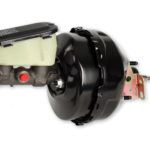
Fleet managers face numerous challenges in ensuring their fleets operate smoothly and efficiently. Amid rising fuel costs, stringent safety regulations, and the constant demand for timely deliveries, the need for effective fleet management has never been greater. One pivotal tool that can significantly enhance fleet operations is advanced equipment monitoring solutions.
This blog post will explore how advanced equipment monitoring can revolutionize fleet management. We’ll compare traditional methods with modern monitoring technologies, analyze the benefits of advanced solutions, and offer tips for selecting the right system for your fleet.
For further reading on how equipment monitoring can optimize your fleet utilization, click the following link: .
https://trackunit.com/articles/equipment-monitoring
The Importance of Equipment Monitoring in Fleet Management
In fleet management, staying up to date with your equipment is more than just a good practice—it’s essential for operational success. Equipment monitoring allows fleet managers to track vehicle performance, maintenance needs, and efficiency. Without proper monitoring, fleets can suffer from unexpected breakdowns, inefficient fuel use, and compromised safety.
Monitoring also plays a crucial role in compliance with regulations. By maintaining accurate records and data, fleet managers can ensure their operations meet industry standards and avoid costly fines. In short—effective equipment monitoring is the backbone of a successful fleet management strategy.
Traditional Methods vs. Advanced Monitoring Solutions
Traditionally, fleet managers have relied on manual inspections and routine maintenance schedules. While these methods have their merits, they often fail to provide comprehensive insights and real-time data. Manual processes are often time-consuming and susceptible to human error, leading to potential oversights that can impact fleet performance.
Advanced equipment monitoring solutions, on the other hand, leverage technology to provide real-time data, automated alerts, and detailed analytics. These systems utilize sensors, telematics, and IoT devices to monitor various aspects of vehicle performance, from engine health to fuel consumption. This shift from reactive to proactive management allows fleet managers to make informed decisions.
Also Read:
- Commonly Used Lifting Equipment in Machinery Processing Plants
- The Different Types of CNC Machines and What They are Used For
- What is CNC Machine – Main Parts, Working, Block Diagram
Enhanced Maintenance Scheduling
One of the most significant benefits of advanced equipment monitoring is improved maintenance scheduling. By continuously tracking vehicle performance, these systems can predict when maintenance is required, minimizing the risk of unexpected breakdowns. This proactive approach to maintenance not only extends the lifespan of your fleet but also minimizes downtime.
With predictive maintenance, fleet managers can schedule repairs during off-peak hours, ensuring that operations remain uninterrupted. This level of efficiency is nearly impossible to achieve with traditional methods, where maintenance is typically based on fixed schedules rather than actual vehicle condition.
Improved Fuel Efficiency
Fuel costs are a major concern for any fleet manager. Advanced equipment monitoring solutions help address this issue by providing insights into driving behaviors and fuel consumption patterns. By analyzing data on acceleration, braking, and idling times, fleet managers can identify areas for improvement and implement strategies to reduce fuel usage.
For example, monitoring solutions can highlight instances of excessive idling, which wastes fuel and increases emissions. By addressing these behaviors, fleet managers can significantly improve fuel efficiency and reduce operational costs. The result is a more sustainable and cost-effective fleet.
Increased Fleet Safety
Safety is paramount in fleet management. Advanced equipment monitoring systems contribute to safer operations by monitoring vehicle health and driver behavior in real-time. Sensors can detect issues such as tire pressure anomalies, brake wear, and engine malfunctions, allowing for immediate corrective action.
Additionally, these systems provide data on driving patterns, enabling fleet managers to identify risky behaviors such as speeding, hard braking, or rapid acceleration. By addressing these issues through targeted training or incentives, managers can foster a culture of safe driving and reduce the likelihood of accidents.
Real-Time Data for Informed Decision-Making
One of the most powerful aspects of advanced equipment monitoring is access to real-time data. This immediate feedback allows fleet managers to make informed decisions quickly, adapting to changing conditions and addressing issues as they arise. Real-time data can be used to optimize routes, adjust maintenance schedules, and improve overall fleet performance.
Additionally, detailed analytics provide insights into long-term trends and patterns, helping managers identify improvement areas and plan for the future. With this level of visibility, fleet managers can take a proactive approach to management, enhancing efficiency and reducing costs.
Tips for Choosing the Right Monitoring System for Your Fleet
Selecting the right equipment monitoring system for your fleet is crucial. Here are some tips to help you make the best choice:
- Assess Your Needs: Identify the unique needs of your fleet, such as the types of vehicles, the routes they cover, and the common issues you encounter.
- Evaluate Features: Look for systems that offer comprehensive monitoring capabilities, including real-time data, predictive maintenance, and driver behavior analysis.
- Consider Scalability: Choose a solution that can scale with your fleet, accommodating new vehicles and technologies as needed.
- Check Compatibility: Ensure the system is compatible with your existing fleet management software and hardware.
- Read Reviews: Research user reviews and case studies to understand how the system has performed for other fleet managers.
- Request a Demo: Many providers offer demonstrations or trial periods, allowing you to test the system before committing.
Future Trends in Equipment Monitoring for Fleet Management
The landscape of equipment monitoring is constantly evolving. Here are some of the future trends to watch out for:
- AI and Machine Learning: These technologies will enable even more precise predictive maintenance and optimization, learning from vast amounts of data to offer tailored insights.
- Enhanced Connectivity: The advent of 5G will improve the speed and reliability of data transmission, making real-time monitoring even more effective.
- Integration with Autonomous Vehicles: As autonomous vehicles become more prevalent, advanced monitoring systems will play a crucial role in managing and maintaining these fleets.
- Sustainability Initiatives: Monitoring systems will increasingly focus on sustainability, helping fleets to reduce emissions and adhere to environmental regulations.
- Augmented Reality (AR): Augmented reality could be used for remote diagnostics and maintenance, providing technicians with real-time visual data and guidance.
Conclusion
Advanced equipment monitoring solutions are transforming the way fleet managers operate. By providing real-time data, predictive maintenance, and insights into driver behavior, these systems help maximize efficiency, improve safety, and reduce costs. For fleet managers looking to stay ahead of the curve, investing in advanced monitoring technology is not just a smart move—it’s essential.







